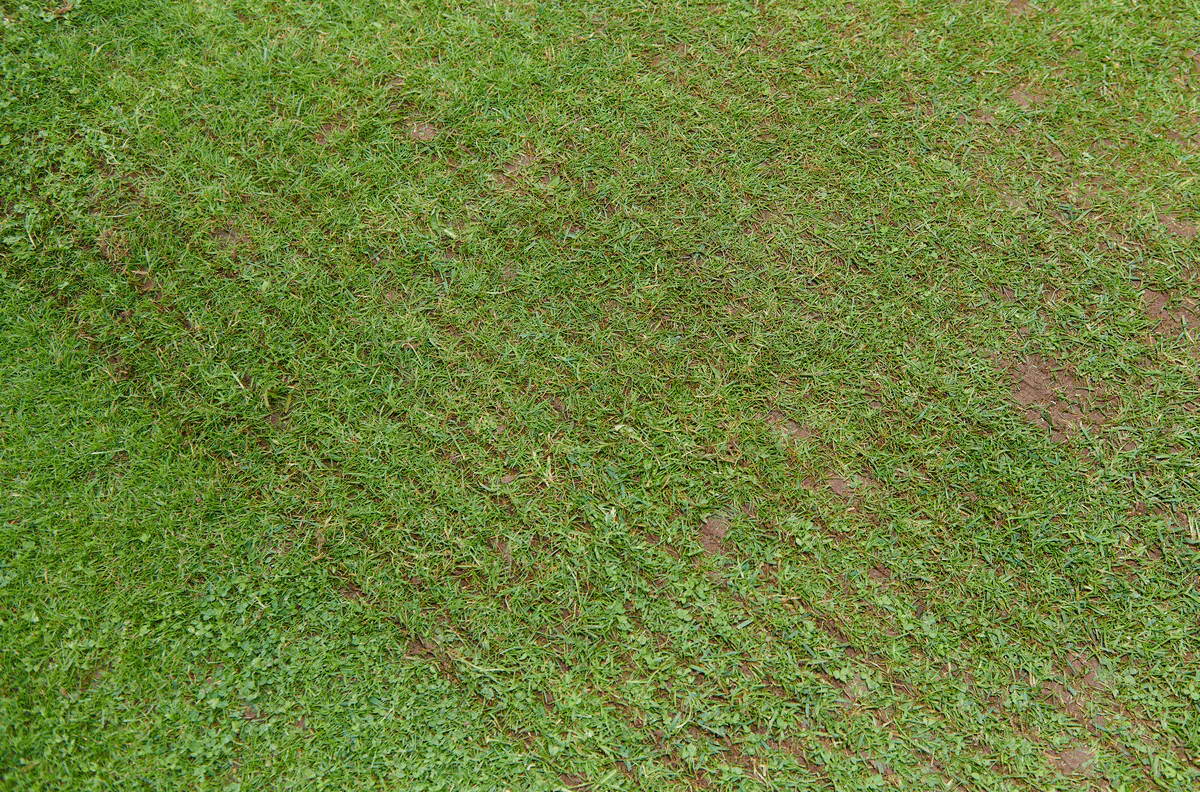Bowling green maintenance
Paul Moreton of Germinal Amenity is an expert in bowling green maintenance. Check out Paul’s guide which covers grass seed selection and seasonal maintenance methods.

Choosing the best bowling green grass seed
Fescue grass seed
As an example, A1 Professional Bowls is a mixture containing modern, high-quality fescue varieties that are tolerant of close mowing, wear and disease. Choosing high-quality bowling green grass seed varieties is vital because lower-quality cultivars will not persist under close mowing.
| Product name | A1 Professional Bowls | ||
| Mixture breakdown | 10.0% | AberRegal Browntop bentgrass | Agrostis capillaris |
| 10.0% | AberRoyal Browntop bentgrass | Agrostis capillaris | |
| 40.0% | Camanette Chewings fescue | Festuca rubra commutata | |
| 40.0% | Camanette Chewings fescue | Festuca rubra commutata | |
Camanette is a newly bred variety that has shot to the top of the BSPB list (national scoring trials) with the highest-ever shoot density of any Chewings fescue. Coupled with Joanna, these are excellent examples of varieties tolerant of close mowing.
Fescues by their very nature are slower-growing, more self-sustainable plants requiring less nutrition or water. However, they are sometimes not up to the extended playing seasons we now have to cater for regarding wear.
Also, the traits of slow growth and less ball resistance also mean slower establishment and growth from overseeding. If you have established fescues, then you can work with them, but they are very hard to establish from seed under today’s playing demands.
Browntop bent
AberMajesty Browntop blend is a more robust option that most golf clubs have switched to over the last few years from a fescue-heavy mix. This is because Browntop can outcompete weed grasses and recover after play: all attributes which produce a far superior playing surface.
AberMajesty also persists under close, frequent mowing and it will also germinate and establish to form a plant quicker than fescue. More importantly, it can offer more rapid spring and autumn recovery.
Browntop and Creeping bentgrass
ForeFront Greens is the next progression in bentgrass mixtures as a blend of Browntop and Creeping Bentgrass. Creeping bent offers all the benefits of Browntop but with added qualities, including the ability to self-repair by creeping. This particular species has had some substantial investment in breeding over the last few years and is now the main choice for elite golf courses, with many bowling clubs adding it to their surfaces.
Other attributes include disease resistance, wear, recovery and rapid establishment. Creeping bent, given a consistent overseeding programme, will out-compete undesirable meadow grasses year-on-year.

Dwarf rye
Dwarf rye has become an option for bowling clubs with smaller budgets due to its perceived economy over bentgrasses. It is a viable option for quick-end repairs in cooler months plus any damage caused by vandalism or machinery failure.
However, Dwarf rye isn’t really a complete overseeding for bowling greens due to its lack of persistence or spreading. Plus, its appearance can be too dark and cause a bumpy ball roll. Ryegrass leaves can be missed by the cylinder mower, too, leaving unsightly patches of lanky growth which will also affect ball roll.
Established bowling green maintenance
The end of the bowling season represents the most suitable and logical time to repair the damage caused by the constant foot traffic of the summer months.
Bowling green end-of-season maintenance
Bowling greens should be thoroughly scarified to remove the accumulated thatch and mown to remove any procumbent growth. Of equal priority is the need to open up the surface to relieve the season’s compaction and thus allow free percolation of air and water to the grass root.

Note: Scarifying not only removes thatch but creates a seedbed if a machine isn’t available Generally, if compaction is severe, hollow tining is preferred, but slitting or tining is beneficial and this is also to be recommended.
Apply your grass seed of choice
If hiring a seeder is out of reach, then simply broadcasting bowling green grass seed is a viable option, especially for smaller bentgrass seeds which will fall nicely into holes or scarify lines.

Note: Overseeding establishment after disc seeding
Follow with a brush
Dressing is then recommended to protect seedlings and the quantity will depend on how much your levels have dipped – seasonal damage or if dry patch has caused any thatch collapse. Focus on these areas with extra coring and soil replacement if a wetting agent programme is not an option.
Autumn bowling green maintenance
An autumn application of a mini granular fertiliser like G9 should be applied to protect the surface going into winter plus give all the new seedlings the food they require. If growth is still substantial, continue mowing and even a light scarify will help to remove any decaying leaves.
Notice that the fertiliser suitable for autumn application has a low nitrogen analysis. This will prevent the succulent top growth associated with a nitrogen application and help to alleviate problems of disease attack.
It is also worth carrying out routine soil analysis and pH tests to ascertain the exact fertiliser requirements of fine turf. In some cases, high phosphate levels will encourage Poa annua.
Bowling green winter maintenance
During a mild winter, grass growth may continue and, therefore, should be mown to 7 mm when conditions allow. Maybe don’t mow the ends and turn your mower 6 feet in from the plinth to avoid smearing.
Other operations should include switching to disperse morning and evening dew, and so reducing the incidence of fungal disease. The removal of worm casts which tend to provide an ideal seedbed for weeds and weed grasses is also advisable.
During frost, snow or heavy rain, bowling greens should not be worked or played on. This will seriously weaken the sward and damage the soil structure should it occur.
Spring/summer bowling green maintenance
Once the conditions are favourable, brushing, switching and mowing should begin. The winter mowing height of 7 mm should be gradually reduced to your final playing height over a period of several cuts.

At the height of the growing season, your bowling green should be cut at least two or three times per week. In spring, bowling green overseeding can be considered. However, the cutting height of the mower may need to be left relatively high to allow the young grasses to establish.
A bowling green should have at least four to five fertiliser applications per year. If granular application is your only option, then look to apply two 25 kg per 1,400m² green bags every six to 10 weeks. This depends on your soil type, weather and general inspection of the surface.
A fertiliser programme that includes a variety of nitrogen sources is crucial. Just applying the same source, such as ammonium sulphate or urea can lead to pH or growth issues. Speak to one of our experts for a plan and soil test.
Overall, being consistent with overseeding and fertilising will lead to quicker gains and fewer issues. Holding off on a fertiliser application with a mind to saving money will cost you more in the long run.
Bowling green maintenance advice
You can discuss your bowling green maintenance programme if needed with our sports grass experts. Contact us now with any questions.


